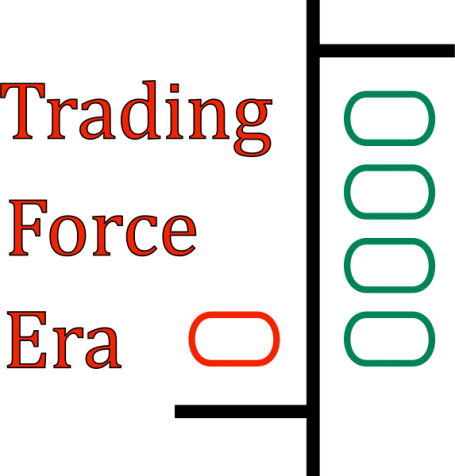Equity Management
ALL
4.0
Investment Objectives
Before anything else, equity managers define clear goals—like capital growth, income generation, or risk control. These objectives shape every decision that follows.

ALL
4.1
Portfolio Construction
This is about whether you intend to be an active trader or use more passive strategies (buy and hold method).
Selecting the right mix of currencies, commodities, stocks/options or even crypto, to match the investor’s goals and risk tolerance.
It involves:
- Diversification across Instruments, sectors, regions, and market caps
- Choosing between growth vs. value stocks

ALL
4.2
Analytical Techniques
There are different methods to evaluate forex, stocks and other traded instruments:
- Fundamental analysis: Studying company financials, earnings, and industry trends
- Technical analysis: Looking at price charts, indicators and patterns
- Quantitative analysis: Using models and algorithms to find opportunities

Risk Management
Managing downside risk is crucial. This includes:
- Diversifying holdings
- Setting position limits
- Using hedging strategies (like options or inverse ETFs)
- Practice, Practice, Practice
ALL
4.3
DEMO TRADING
1. Risk-Free Practice Ground
Demo trading lets you explore the markets using virtual money, so you can make mistakes, test strategies, and learn the ropes without putting your real capital on the line. It’s like flight simulation for traders—zero crash risk, all the learning.
2. Strategy Testing Without Consequences
Whether you're trying out a new technical setup, experimenting with leverage, or refining your entry and exit rules, a demo account gives you a safe environment to test and tweak. You’ll know what works—and what doesn’t—before going live.
3. Platform Familiarity
Every trading platform has its quirks. Demo trading helps you get comfortable with order types, charting tools, and risk management features so you don’t fumble when real money’s on the line.
4. Emotional Conditioning
Trading with real money can trigger fear, greed, and hesitation. Demo trading helps you build discipline and confidence by practicing decision-making in a simulated environment. It’s mental training for the real thing.
5. Risk Management Rehearsal
You can practice using stop-losses, take-profits, position sizing, and other risk controls in real-time market conditions—without the financial consequences. That’s how you turn theory into instinct.
In short, demo trading is your training ground, laboratory, and safety net all rolled into one.

ALL
4.4
RISK-To-REWARD RATIO
It’s one of the most powerful tools in a trader’s risk management arsenal , for the following reasons:
1. It Keeps You Focused on Quality, Not Quantity
A good risk-to-reward ratio—like 1:2 or 1:3—means you’re aiming to make $2 or $3 for every $1 you risk. That way, even if you’re right only half the time, you can still come out ahead. It shifts your mindset from “How often do I win?” to “How much do I win when I’m right?”
2. It Builds Discipline and Patience
By setting a favorable ratio before entering a trade, you’re forced to think through your exit strategy. It helps you avoid emotional decisions and overtrading. You’re not just chasing setups—you’re waiting for the ones that make sense mathematically.
3. It Protects You from Death by a Thousand Cuts
Even a few losing trades won’t sink your account if your winners are bigger than your losers. A solid risk-to-reward ratio acts like a financial buffer, absorbing losses and keeping your equity curve healthy.
4. It’s the Foundation of a Profitable System
Many professional traders build their entire strategy around risk-to-reward. Combine a 1:3 ratio with a 40% win rate, and you’ve got a system that can grow over time. It’s not about being perfect—it’s about being consistent.
5. It Makes Backtesting and Journaling More Meaningful
When you track your trades, a consistent risk-to-reward ratio gives you clearer data. You can spot patterns, refine your edge, and make smarter adjustments

ALL
4.5
Real vs Demo Trading
moving from demo to real trading is a big milestone, and it comes with a few surprises. Here’s what to expect when you make the leap:
1. Emotions Hit Differently
In demo trading, it’s all theory—no real money, no real fear. But once your own cash is on the line, emotions like fear, greed, hesitation, and regret show up fast. Even small losses can feel personal, and that can lead to second-guessing or impulsive decisions.
2. Execution Isn’t Always Perfect
In a demo account, trades often fill instantly at the price you click. In real markets, you’ll face slippage, spreads, and delays—especially during high volatility. It’s a wake-up call that execution isn’t always as smooth as the simulator.
3. Risk Feels Real
You might have risked 2% per trade in demo without blinking. But in live trading, that same 2% can feel like a mountain. Many traders reduce their position size when they go live just to stay emotionally balanced.
4. Discipline Gets Tested
It’s easy to follow your plan in demo mode. But in real trading, sticking to your strategy—especially after a loss—takes serious mental strength. This is where journaling and reviewing your trades becomes essential.
5. Small Is Smart
Start with a small live account—just enough to feel the pressure, but not enough to wreck your finances. Think of it as tuition for learning how to trade with real emotions and real consequences.
6. Same Strategy, Same Rules
Don’t switch things up just because it’s real money. If your strategy worked in demo, trust it. The goal is to build consistency, not chase excitement.
7. Journaling Becomes Gold
Track your trades, your thoughts, your emotions. You’ll start to see patterns—not just in the market, but in yourself. That’s where real growth happens.

